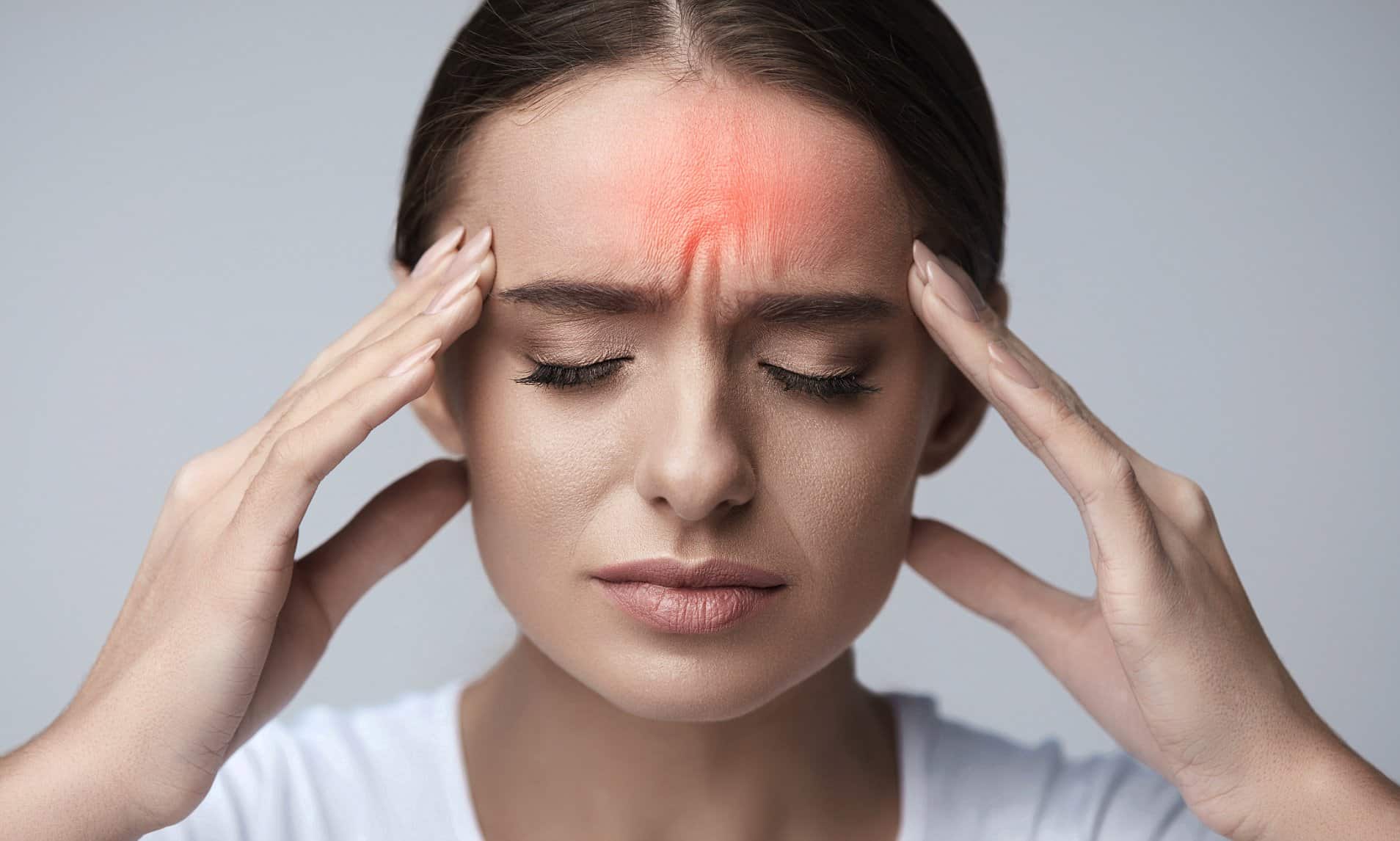Are you experiencing episodes of headaches? Are the pains you feel more severe than the usual? Chances are, you’re suffering from migraines. A lot of people say they have a migraine because of the frequency of the attacks, as well as the severity of pain. However, there are more factors to consider to confirm that you are indeed suffering from head illness. More so, you must know too — the migraine triggers, which can be the culprit of the discomforting pain.
Migraines are powerful headaches frequently happening with vomiting, sensitivity to light, and nausea. Typically, an episode of migraine lasts from 4 hours to 2-3 days. Sometimes the pain even stays longer than that. An estimate by the American Migraine Foundation presents that over 36 million Americans are migraine sufferers. From these millions of Americans, the number of women is 3 times more than men.
Most migraine sufferers start having episodes of pain from ages 10 to 40 years old. Nevertheless, a lot of women have discovered their migraines improve or disappear after they turn 50 years old.
What are the causes of episodes of migraine?

Migraines are a symptom of a general condition, also called migraine. Even health care professionals, including doctors, do not know the exact cause of this kind of headache. However, they appear to be in association with changes in the brain and the genes running in families. At times, an individual can even inherit the migraine triggers such as bright lights, fatigue, and weather changes, among others.
For quite some time now, scientists have believed migraines are the result of blood flow changes in the brain. Moreover, a lot of people migraine occurs because brain flaws which the parents in the family passed down to them. The severe headaches start when the overactive nerve cells deliver signals that are activating the trigeminal nerve. This particular nerve supplies the sensation to a person’s face and head.
Meanwhile, the activation of the nerve is the one causing the emission of certain chemicals such as calcitonin gene-related peptide (CGRP) and serotonin. CGRP is the one that’s causing the blood vessels in the brain’s lining to swell. More so, it emits neurotransmitters, which cause both pain and inflammation.
What migraine triggers can one experience?
Migraine triggers vary. Also, not the same trigger takes place in every episode of pain. The most typical migraine triggers are as follows:
- Stress as the main migraine trigger – When a person is stressed, his brain is releasing chemicals. These chemicals can potentially cause changes in the blood vessel, which eventually leads to a migraine.
- Foods and Beverages – Certain foods and beverages like alcohol and aged cheese contribute to migraine triggers. In addition, food additives such as nitrates in luncheon meats, hotdogs, and pepperoni, as well as monosodium glutamate (MSG), can be great contributors to migraine triggers, too. In fact, a study finds that they are even accountable for up to 30% of migraine attacks.
- Caffeine – Abrupt withdrawal from or over-consumption of caffeine can cause migraines when the level in your body instantly drops. Seemingly, blood vessels are used to caffeine that when a person does not have any, he is likely to experience headaches, or worse, a migraine. However, while caffeine is famous for being a significant part of the migraine triggers, others consume it to treat their acute migraine attacks.
- Constantly Changing Weather – Any part of the world goes through changes in weather. Storm fronts, barometric pressure changes, strong winds, and altitude changes are all contributing too, to migraine triggers.
Other than these, there are other migraine triggers that an individual may be experiencing, regardless of the frequency and severity of his headache. These include a monthly period for women, skipping meals for the health and wealth conscious, feeling tremendously tired or exhausted, and irregular sleep-wake cycle.
What Are the Symptoms that Lead to Migraine Triggers?
If you’re not sure about the headache you’re experiencing (whether it’s already migraine or not), you will discover that several symptoms can help you confirm the illness. Below are the most common symptoms. Check them out and see if you’ve experienced any or all of them:

- Belly pain, upset stomach, nausea, and vomiting
- Pale skin
- Sensitivity to noise, strong smells, and flickering lights
- Loss of appetite
- Fatigue
- Diarrhea
- A very cold or warm feeling
- Dizziness
- (Rare) Fever
As earlier mentioned, typical episodes of migraines last for about 4 hours. However, severe pains can last for up to more than 72 hours or 3 days. The frequency of attacks for everyone varies. Nevertheless, it is typical to experience from 2 to 4 headaches each month. Some may even experience migraines every few days while the others acquire them once or twice every year.
What are the different types of Migraine Headaches?
2 types of migraines refer to the symptoms signaling when an individual is about to have one. One type is called migraine with aura, and the other, migraine without aura. The first type mentioned is the ‘classic’ type of migraine. Meanwhile, the second type is the ‘common’ migraine type. Any aura that occurs typically starts an hour before the onset of pain, and it usually lasts from 15 minutes to 1 hour.
Moreover, there are what we call the ‘visual auras.’ These kinds of aura include blind spots, temporary weight loss, bright flashing lights of dots, temporary loss of vision, jagged or wavy lines, and blurry vision. Other auras can impact a person’s other senses. He may have a ‘funny feeling’ and unable to describe such a sensation. More so, an individual can hear some ringing in his ears, or experience some changes in his smell, touch, or modification.
How do You Avoid and Treat Migraine Triggers?
More often than not, you’ll find no cure for migraines. However, many drugs can potentially treat the illness or even prevent it from occurring. These medicines can also help you to avoid migraine triggers. Here are some of the common types of treatment for migraine:
- Pain reliever – These are over-the-counter (OTC) medicines that frequently work for most people. Its main ingredients include acetaminophen, caffeine, ibuprofen, and aspirin. Essentially, young individuals younger than 19 years old should not be given aspirin due to the risk of Reye’s syndrome. Medical experts have warned anyone taking the OTC pain relievers as there are times when they contribute to headache attacks. Relatively, too much use of these types of medicines can lead either lead one to rebound headaches or make one reliant on them. If you or anyone you know is taking an OTC pain reliever for more than 2 days each week, it is best to consult for medical advice. He can recommend prescription medicines that can be more effective.
- Nausea medicine – The doctor can give you a prescription if you’re experiencing nausea due to migraines.
- Preventive drugs – If you are not responsive to other treatments and you’re having episodes of migraine 4 times each day per month (or even more), the doctor may recommend these. You can take preventive medicines regularly to lessen your headaches’ frequency. Some of the preventive prescriptions include blood pressure medicines like calcium channel blockers and seizure medicines and several antidepressants.
- Biofeedback – This approach will help an individual acknowledge stressful situations that can be a migraine trigger. If the head pain begins slowly, biofeedback can prevent the attack from occurring. It can also stop the episode before it becomes full-blown.
- Transcranial magnetic stimulation (TMS) – One can have this treatment through the use of a device on the back of the head. The best time to do this is a migraine with aura starts to take place. The tool sends a pulse of the so-called magnetic energy to a brain part, which may prevent or at least lessen the pain.
So, who says migraine is non-treatable? Not when you know the kind of migraines you have and the triggers you’re experiencing. The illness may not be treated entirely, but you can have fewer attacks the moment you have identified and avoided the triggers. Monitor your symptom patterns using a diary so you can determine its primary cause. Lastly, it will also help if you go through relaxation and stress management training. It will help prevent migraine attacks or tame down their severity.
